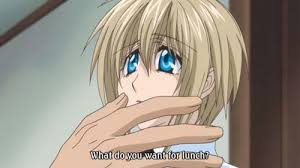
Exploring the World of Yaoi Relationships
Exploring the World of Yaoi Relationships The literary and cultural landscape is constantly changing, but one genre, Yaoi, has stood the test of time and become increasingly popular. This essay attempts to take you on a tour of the world of Yaoi relationships, providing insights into its beginnings, themes, and impact on the creative world.
Yaoi.
Let’s start at the beginning before we get into the weeds of Yaoi dating customs. Romantic and sexual connections between male characters are the primary emphasis of the Yaoi subgenre of manga, anime, and literature. It’s usually made by and for women, and its global fanbase is overwhelmingly female.
Yaoi’s Deep Roots
To get a deeper grasp on Yaoi, its history must be investigated. The origins of this subgenre may be traced back to the 1970s in Japan when female manga artists started making stories about relationships between men. Initially, these stories were seen as a means of self-expression for female authors and artists.
Tropes and Themes
Themes and clichés in Yaoi stories vary widely, making them suitable for readers with various interests. Here are a few recurring ideas:
Unrequited Love
The concept of forbidden love is central to many Yaoi stories, in which social conventions hamper the characters’ interactions. The story becomes more dramatic and tense because of this.
Profound Feelings
Yaoi frequently explores the complex emotional nuances of the interactions between his characters. Their frailties, fears, and the nuances of their affection for one another are all examined.
The Dynamics of Character
The genre commonly focuses on the power imbalance in romantic partnerships, with one partner taking on a submissive position. In a story, these relationships can change throughout time.
Realistic vs. Imaginative
Yaoi can show anything from a realistic portrayal of a same-sex couple to an idealized one. Creators can now accommodate a broader range of tastes because of this adaptability.
Effects of Yaoi
Both among its core demographic and outside in the realms of literature and popular culture, Yaoi has left an indelible mark. Yaoi has left its imprint in the following ways:
a depiction
Yaoi represents LGBTQ+ folks, presenting stories and characters they may identify with. This has been especially significant in communities where members of the LGBTQ+ community are marginalized.
Horizons Widening
Many people’s first exposure to same-sex relationships and talks of other forms of romance can be attributed to this genre.
Cultural Interaction
Fans and creators of Yaoi come from all over the world, making it truly international. The genre has benefited from and become more popular worldwide due to this cross-cultural interaction.
Conclusion
Yaoi relationships are essential in the art world despite being misinterpreted or misunderstood. They give a unique viewpoint on love, relationships, and human emotions. Whether you’re a die-hard fan of Yaoi or just curious about the genre, you can’t dispute its influence and importance on modern art.
Frequently Asked Questions
Is Yaoi aimed solely at women?
While Yaoi was created with women in mind, it is not exclusively female-oriented.
How often do Yaoi make their relationships clear?
No, not every Yaoi tale has sexually explicit elements. Some people are more concerned with the feelings involved in a partnership.
Can I find Yaoi stories in the mainstream media?
Some works Yaoi inspired have even made their way into popular media, such as anime and movies.
Do Yaoi stories deal with LGBTQ+ issues?
Many Yaoi works do deal with queer and transgender topics and relationships.
Where can I find some good Yaoi manga and anime?
You may find Yaoi manga and anime in various places, including online and at bookshops.

Exploring the World of Yaoi Relationships

